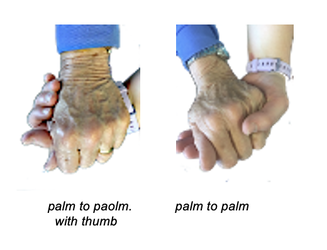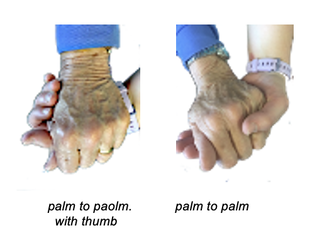Promoting mobility in people with dementia  Promoting functional mobility with movement strategies 1. To overcome the person’s fear/reluctance of standing up, place the back of a stout dining chair in front of him, but not so close that he can pull himself up on it. 2. To facilitate chair to chair transfers, use a dining chair as in 1. To fill the place in front of the person and offer reassurance during the manoeuvre. 3. To facilitate rising to standing from the edge of a bed or settee: the carer(s) seated beside the person use their thighs as substitute chair arms for him to push against. They both/all rise “in unison’. Use a dining chair to fill the space in front, as in 4. To encourage even strides while walking, close assistance is given and the carer(s) step/s ‘in unison’ with the person, with both/all using the same foot at the same time. 5. To achieve moving from the front to the back of a chair, demonstrate the side to side rocking movement required in front of the person. Ensure that both his hands are placed on the arms of his chair. 6. To encourage walking, place a chair as a visible goal to mark the required distance. Communication Strategies Treat the person as an individual with feelings and emotions.
Verbal Strategies
T - time R - reassurance R - repetition THE PERSON NEEDS E - empathy C - courtesy C - consistency Non-verbal strategies and cues To produce movement in a specific direction
Some misinterpretations that may affect mobility or cause falls
To maintain sitting and standing balance
 General considerations
 Comments are closed.
|
AuthorShonagh O'Hagan Archives
July 2024
|


 RSS Feed
RSS Feed